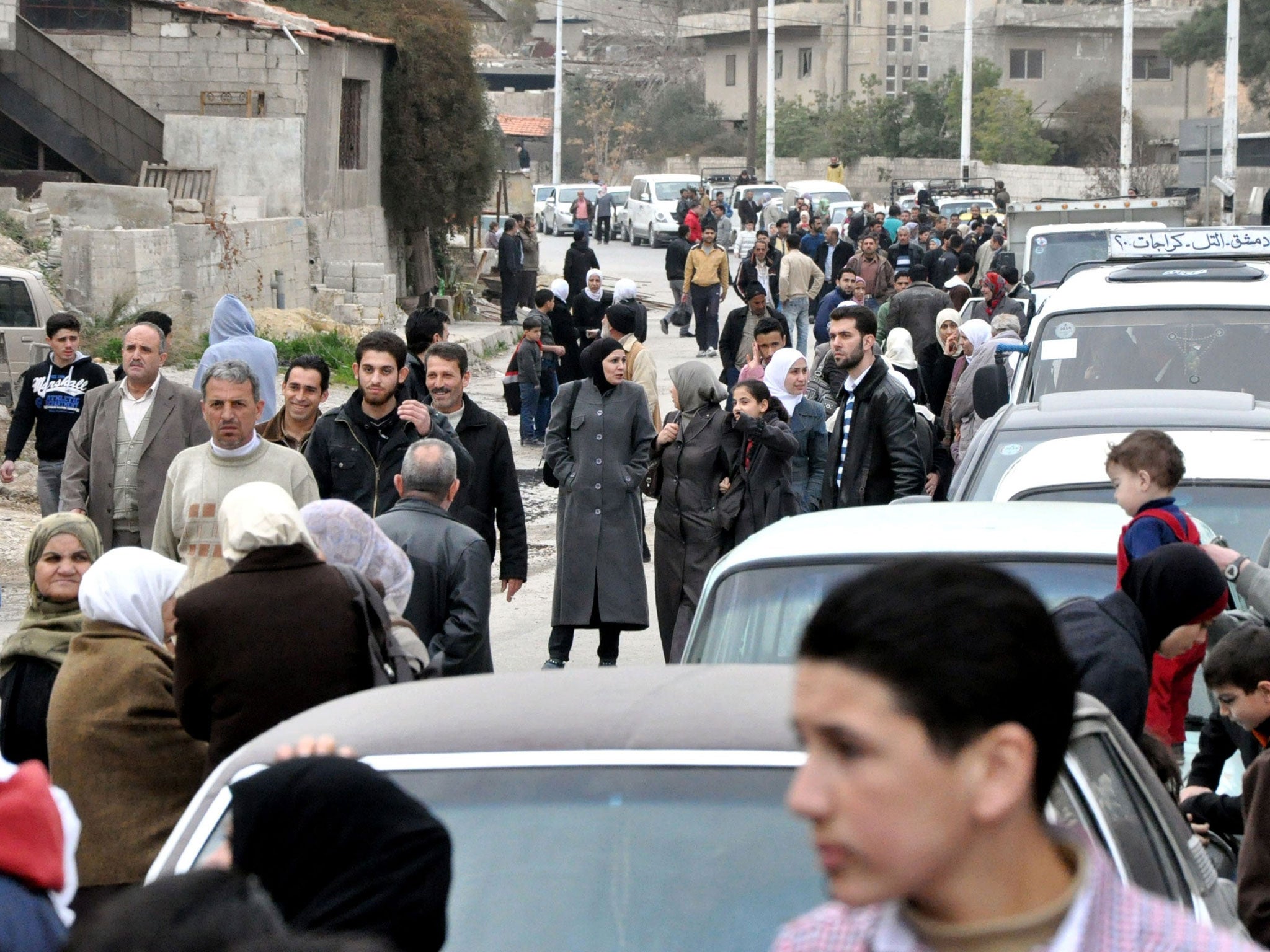Syrians return to their badly damaged homes as ceasefire makes streets safe again

Your support helps us to tell the story
From reproductive rights to climate change to Big Tech, The Independent is on the ground when the story is developing. Whether it's investigating the financials of Elon Musk's pro-Trump PAC or producing our latest documentary, 'The A Word', which shines a light on the American women fighting for reproductive rights, we know how important it is to parse out the facts from the messaging.
At such a critical moment in US history, we need reporters on the ground. Your donation allows us to keep sending journalists to speak to both sides of the story.
The Independent is trusted by Americans across the entire political spectrum. And unlike many other quality news outlets, we choose not to lock Americans out of our reporting and analysis with paywalls. We believe quality journalism should be available to everyone, paid for by those who can afford it.
Your support makes all the difference.For the first time in the Syrian civil war a ceasefire agreement in a Damascus district sees rebel fighters keep their weapons and control of their own neighbourhood in return for an end to the fighting. If repeated in other parts of Syria, such agreements have the potential to de-escalate violence that has left 130,000 Syrians dead.
A ceasefire was taking hold over the weekend in the district of Barzeh in north Damascus, which has been besieged for at least nine months. A Free Syrian Army leader, who gave his name as Abu Hamzeh, said: “We made a reconciliation agreement to stop the rivers of blood that have flowed in Barzeh.”
Most buildings in Barzeh, which once had a population of 50,000 people, have been badly damaged or destroyed by bombs or shells, which have left apartment blocks gutted by fires and thick concrete floors smashed to pieces. Hundreds of refugees who returned to Barzeh yesterday after months away were visibly distraught at the massive damage to their homes, which had in many cases been looted.
A senior leader of the Free Syrian Army, called al-Kal, said that under the terms of the agreement, “I am expecting the government to release about 350 prisoners from Barzeh, but all we have got so far is three dead bodies.” He complained that the government checkpoints around Barzeh were not letting through trucks containing foods as promised. On the other hand, government soldiers have pulled backed from some strong points.
Al-Kal said the shooting could start again, but the FSA, Syrian army soldiers and the returning refugees did not look as if they expected more fighting. Municipal employees were working on pylons so electricity supplies could be reconnected after months without it.
A doctor, who did not want to give his name, said that during the siege there was food from the stocks of those who had fled, but no fresh vegetables or fruit. He showed a picture of a baby wounded in an explosion whom he had tried to treat with inadequate medical supplies. Abu Hamzeh said about 250 people including women and children had been killed in the siege.
What has happened in Barzeh is important because Damascus has many rebel-held districts blockaded and bombarded by the Syrian Army. In most cases much of the civilian population has fled, though in Barzeh, FSA commanders claimed that 25,000 had remained. Given the scale of the destruction this looks like an over-estimate. Though food supplies had been limited, nobody on the street looked malnourished and al-Kal said they had not been starving.
There have been many truces and unofficial ceasefires in the Syrian war, but this appears to be the first time FSA men keep control of their district. In theory they are part of the National Defence Force but they spoke of themselves as belonging to the FSA. Asked if his men had given up their heavy weapons, al-Kal said: “It was the government that asked for an agreement, not us, and we keep our weapons.” He said local fighters would keep out “foreigners” which may be a reference to other rebel fighters.
Although the ceasefire had been in force for some days we did not find it easy to enter Barzeh despite official government permission. Ultimately, we drove down a road through a rocky ravine on Mount Qassioun, overlooking Damascus. There were FSA men standing with Syrian Army soldiers at a checkpoint, one of whom took us to a badly damaged mosque inside Barzeh. Here we met Abu Hamzeh and later al-Kal, who was at first suspicious, but later took us on a tour to see the destruction.
It is all the more striking because rebel-held Barzeh is surrounded by undamaged neighbourhoods where life goes on as normal.
Could similar agreements be reached in other parts of Syria? The Syrian government has proposed a ceasefire in Aleppo, but after three years of war the two sides are divided by hatred and fear. It would be difficult to reach an accommodation where jihadi groups are an important element of the local opposition.
Join our commenting forum
Join thought-provoking conversations, follow other Independent readers and see their replies
Comments